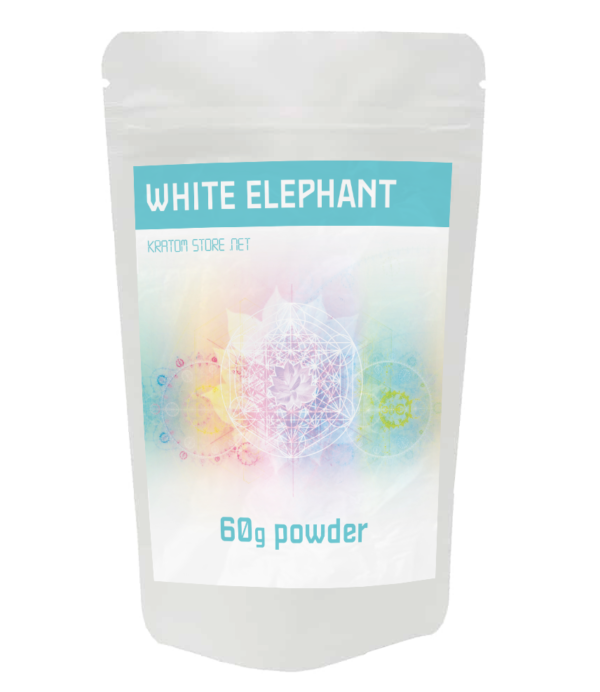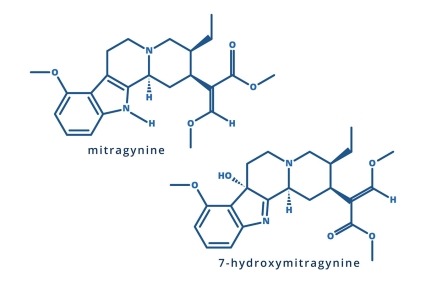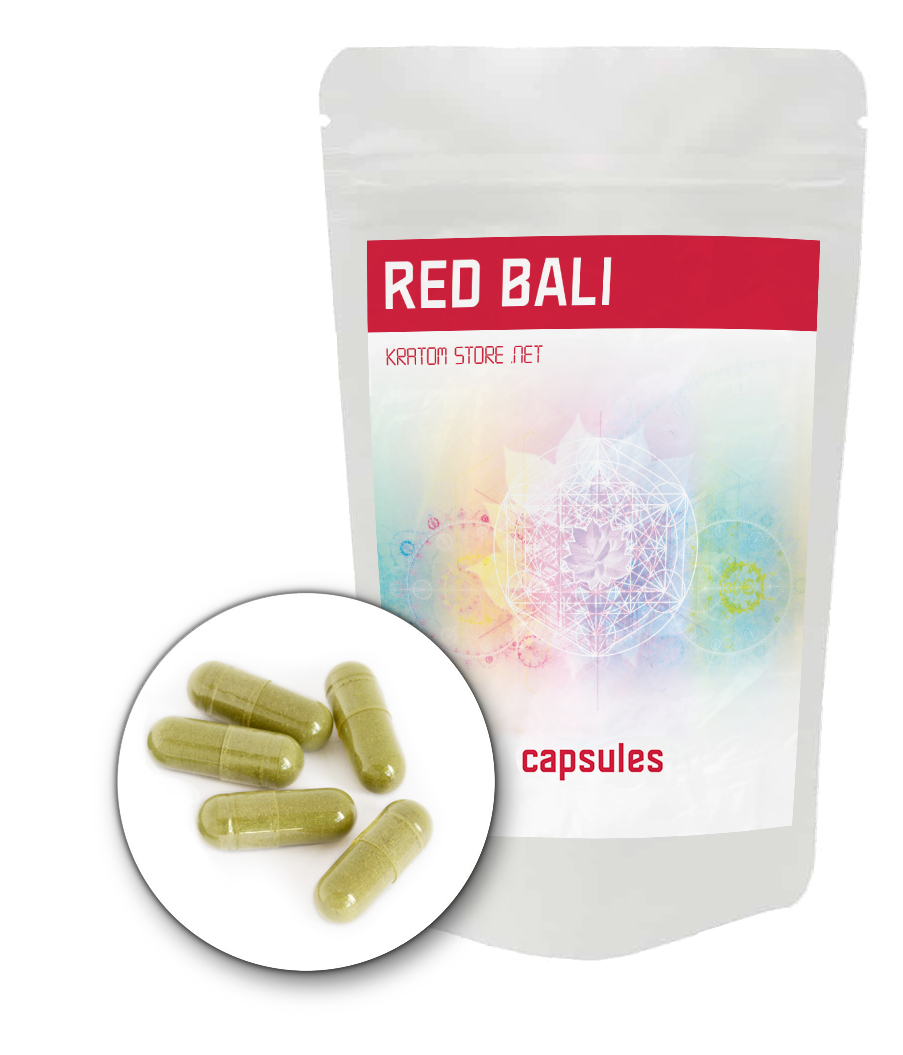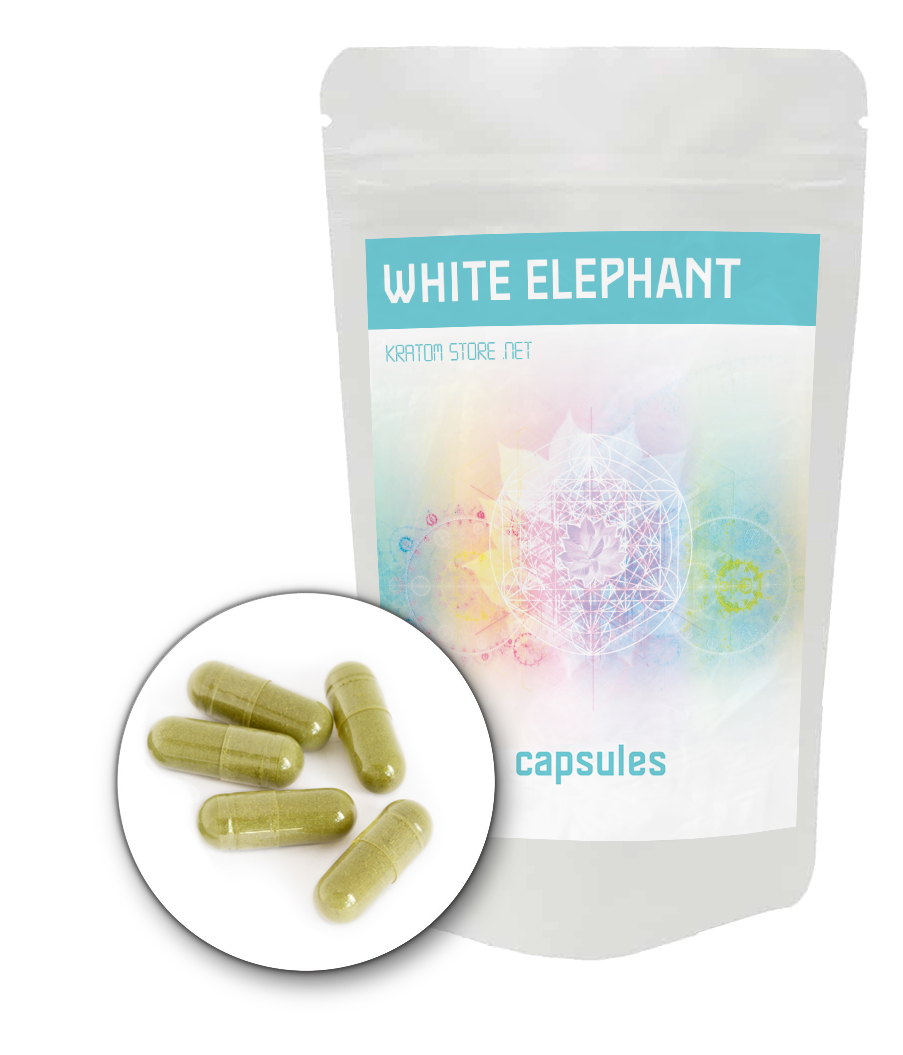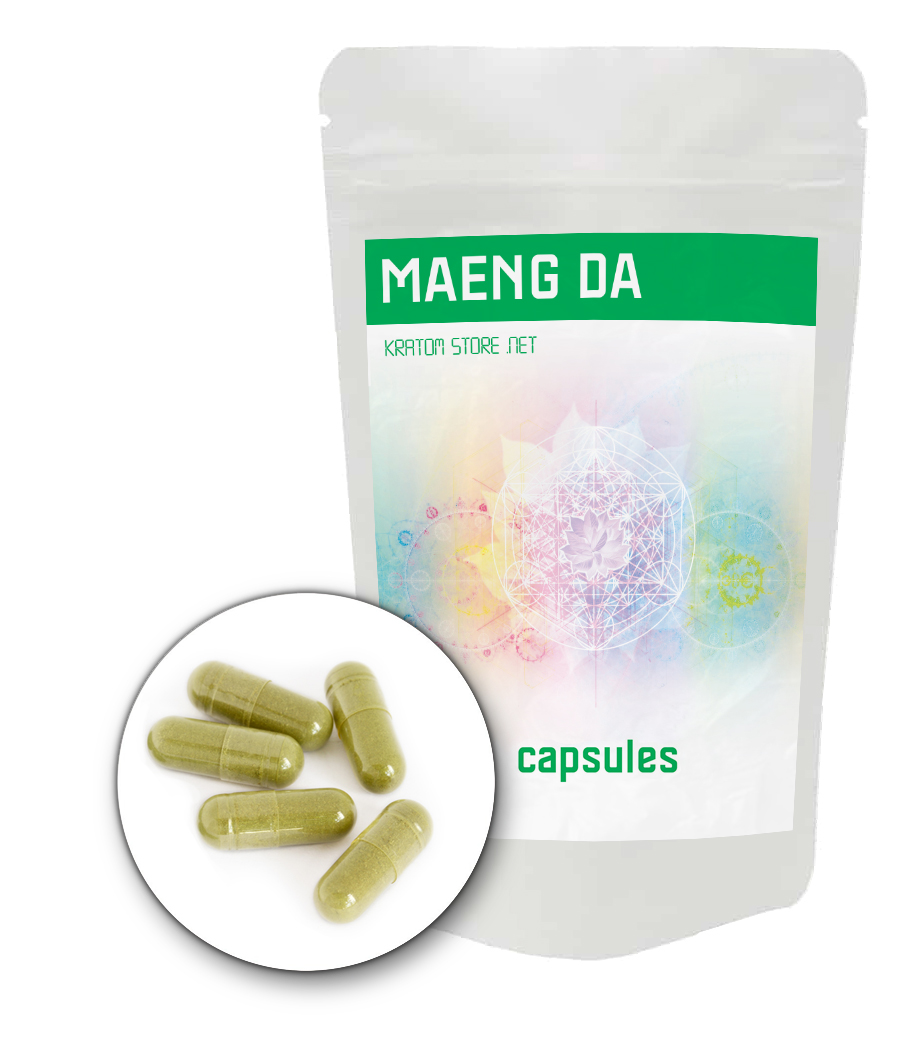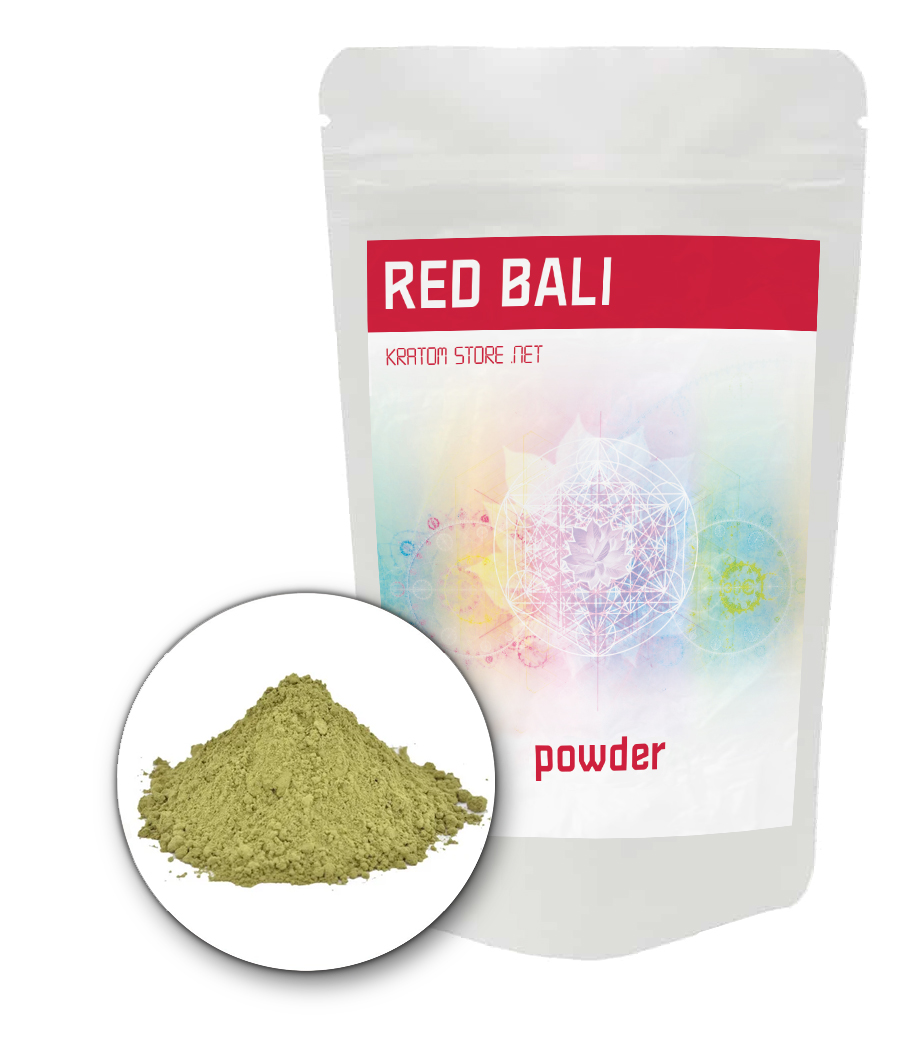Flown straight from the jungles of Indonesia, then purity tested and packaged in Colorado.
Disclaimer:
† These statements have not been evaluated by the FDA. This product is not intended to diagnose, treat, cure or prevent any disease. This product is not for use by or sale to persons under the age of 18. This product should be used only as directed on the label. It should not be used if you are pregnant or nursing. Consult with a physician before use if you have a serious medical condition or use prescription medications. A Doctor’s advice should be sought before using this and any supplemental dietary product. All trademarks and copyrights are property of their respective owners and are not affiliated with nor do they endorse this product. By using this site, you agree to follow the Privacy Policy and all Terms & Conditions printed on this site. Void where prohibited by law.
FAQ:
Stay informed on the potential benefits and risks of kratom by reading a wide variety of sources here:
Andrew Huberman –
AMA #9: Kratom Risks, Does Infrared Sauna Work & Journaling Benefits
( Source )
KRATOM SINGKUT –
A LEAF OF FAITH (2018) KRATOM DOCUMENTARY
( Source )
VICE TV –
The Secret Kratom Plants of Thai Farmers | HAMILTON’S PHARMACOPEIA (Trailer)
( Source )
VICE TV –
Kratom The Forbidden Leaf – Hamilton’s Pharmacopeia S02E03
Depraved Eros –
Is Kratom the Miracle Drug? Mini-documentary
( Source )
Psyched Substance –
What Being Addicted To Kratom Feels Like | My Experience
( Source )
JRE Clips –
Joe Rogan – Why Kratom is Illegal
( Source )
Unregistered Podcast –
Hamilton Morris Explains The Kratom Controversy
( Source )
Ohmni Kratom –
Kratom Documentary HD
( Source )
Highlights
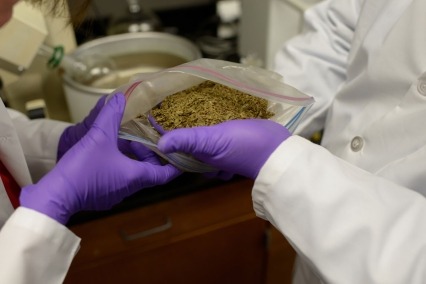
- “Kratom” commonly refers to an herbal substance that can produce opioid- and stimulant-like effects. Kratom and kratom-based products are currently legal and accessible in many areas, though U.S. and international agencies continue to review emerging evidence to inform kratom policy.1
- While there are no uses for kratom approved by the U.S. Food and Drug Administration, people report using kratom to manage drug withdrawal symptoms and cravings (especially related to opioid use), pain, fatigue and mental health problems.2,3,4 NIDA supports and conducts research to evaluate potential medicinal uses for kratom and related chemical compounds.
- NIDA also supports research towards better understanding the health and safety effects of kratom use. Rare but serious effects have been reported in people who use kratom, including psychiatric, cardiovascular, gastrointestinal and respiratory problems.1,5 Compared to deaths from other drugs, a very small number of deaths have been linked to kratom products and nearly all cases involved other drugs or contaminants.1,6,7,8,9,10
What is kratom?
“Kratom” refers to both Mitragyna speciosa, a tree native to Southeast Asia, and to products derived from its leaves that are marketed as herbal supplements. Kratom leaves contain many chemical compounds (known as bioactive alkaloids) that can affect the body. The most well-studied compounds related to kratom are mitragynine and 7-hydroxymitragynine.1 (See How do kratom compounds work in the brain?)
Much is still unknown about chemical compounds related to kratom, the short- and long-term health and safety impacts of kratom use and kratom’s potential therapeutic uses. NIDA supports and conducts research on kratom and related chemical compounds to help inform kratom policy and health decision-making around kratom use. (See How is NIDA advancing research on about kratom?)
While kratom or its related compounds have not been approved by the U.S. Food and Drug Administration as safe and effective for any medical use, people report using kratom products to alleviate drug withdrawal symptoms and cravings (particularly for opioids), to alleviate pain and to help manage mental health problems.3,4,11,12,13,14,15,16 (See Why do people use kratom?) NIDA is particularly interested in studying how kratom use may impact opioid use, which continues to drive the drug overdose epidemic in the United States.
People typically use kratom by swallowing raw plant matter in capsule or powder form, mixing kratom powder into food or drinks, brewing the leaves as a tea, or taking liquid kratom extract.1 People who use kratom report both stimulant-like effects (increased energy, alertness and rapid heart rate) and effects that are similar to opioids and sedatives (relaxation, pain relief and confusion).10,17 Studies and case reports have also indicated rare adverse effects may be associated with kratom or individual kratom compounds.1,9 (See How does kratom affect the body?; Is kratom safe?)
Anthropologists report that kratom has been used in Southeast Asia for hundreds of years as a multi-purpose remedy in traditional medicine, to increase alertness and energy while working and during social gatherings.18 While estimates of the scope of kratom use in the United States vary,19 the expansion of kratom vendors and increasing case reports suggest kratom use has become more common over the past two decades.20
How does kratom affect the body?
Researchers are still learning how kratom and kratom compounds affect the body, as well as how short- and long-term kratom use may impact health. While evidence is quickly evolving, early studies have revealed important information about how the drug works.
- Effects may vary widely. Like all drugs, kratom’s effects may depend on the amount taken, potency (concentration and strength), formulation of the product, the way it is ingested, other drugs in a person’s system, a person’s underlying medical conditions, and a person’s previous experience with the substance, among other factors.3, 4, 17 Importantly, kratom products vary, so effects are difficult to predict. Some kratom products have been found to contain contaminants that produce effects not associated with kratom or kratom compounds alone.6, 7, 21 Learn more: Is kratom safe?
- Kratom produces opioid- and stimulant-like effects. People who use kratom report both stimulant-like effects (increased energy, alertness and rapid heart rate) and effects that are similar to opioids and sedatives (relaxation, pain relief and confusion). While many people who use kratom report that smaller doses of kratom produce stimulant-like effects and larger doses produce opioid- or sedative-like effects,4 studies have not yet established that these effects depend on the amount or method of kratom consumed.10, 17
- Mitragynine, 7-hydroxymitragynine, and other kratom compounds drive these effects. The effect of kratom products can vary depending on the concentration and combination of specific kratom compounds within the product. While kratom leaves contain many chemical compounds that may influence the human body, the most well-studied is mitragynine. When ingested, mitragynine breaks down into another chemical called 7-hydroxymitragynine, which also influences the body and is an important subject of research.22 Learn more: How do kratom compounds work in the brain?
- Adverse effects range from mild to severe. Some people who use kratom have reported mild side effects, such as nausea, constipation, dizziness and drowsiness.3, 4 In case reports, clinicians report seeing patients with a wide range of rare but serious adverse effects associated with kratom exposure—including mental and neurological symptoms (confusion, tremors and seizures), heart and lung problems (high blood pressure and slow breathing), gastrointestinal problems (nausea and vomiting) and liver problems.1, 23 A very small number of deaths have been linked to kratom products, and nearly all cases involved other drugs or contaminants.1,6, 7, 8, 21, 24 (See Is kratom safe?)
- Drug interactions may influence effects. Studies suggest many people who use kratom also use other drugs and have conditions for which medications are often prescribed.3, 4, 17 Case reports suggest using kratom in combination with other drugs (sometimes called polysubstance use) may produce severe adverse effects, such as liver problems or even death.25 More research is needed to better understand the impact of using kratom in combination with other substances. (See Is kratom safe?)
- Long-term health effects are not well understood. Because kratom research is relatively new compared to more widely used drugs, there is little evidence to determine how kratom use may affect someone over time. Case reports do show regular, long-term, kratom use in large amounts may be associated with serious liver problems. These cases appear to occur unpredictably in a small minority of people who use kratom, and it is unclear what role other substances and underlying health conditions may play.9, 26 (See Is kratom safe?) Researchers are also still learning how often and to what extent people who use kratom experience withdrawal or substance use disorder symptoms related to kratom use. Learn more: Is kratom addictive? Do people experience kratom withdrawal?
- Research on potential therapeutic effects of kratom is ongoing. Researchers have not proven kratom to be safe or effective for any medical purpose, though kratom has been used in traditional medicine.18 Many people who use kratom products report doing so to self-treat pain, anxiety, depression, fatigue, and drug cravings and withdrawal symptoms (especially related to opioid use).1, 3 NIDA supports and conducts research on therapeutic uses of kratom and related compounds. Learn more: Could kratom be used as medicine?
How do kratom compounds work in the brain?
Kratom leaves contain many chemical compounds (known as bioactive alkaloids) that influence the body. The most well-studied kratom-related compounds are mitragynine and 7-hydroxymitragynine. Mitragynine is found in kratom leaves and breaks down into 7-hydroxymitragynine in the body when digested.22, 27 Both activate mu-opioid receptors (specific molecular structures on the surface of nerve cells), but the resulting effects only partially compare to those of opioids like heroin or oxycodone.28
Some research suggests that mitragynine and 7-hydroxymitragynine may not cause some of the more serious adverse effects associated with opioid use—such as respiratory depression (trouble breathing)—that can occur during a life-threatening opioid overdose.29 Scientists also have observed that mitragynine may bind to adrenergic receptors, serotonin receptors and dopamine receptors, which may be responsible for some of the arousing effects some people who use kratom report experiencing.1, 30, 31
Better understanding where and how kratom compounds work in the brain is an active area of NIDA-funded research. This basic research plays an important role in identifying kratom’s health effects and potential therapeutic uses. Learn more: How is NIDA advancing research on kratom?
How is NIDA advancing research on kratom?
Scientific research on kratom is relatively new compared to research on more widely used drugs. Much is still unknown about chemical compounds related to kratom, the short- and long-term health and safety impacts of kratom use and kratom’s potential therapeutic uses. In response to reports of increases in kratom exposures in the United States6 and emerging questions about kratom and its health effects, NIDA is supporting research on kratom’s use, effects, mechanisms and therapeutic potential.
To help inform kratom policy and health decision-making around kratom use, NIDA conducts and supports research on how kratom compounds work in the brain, as well as research on kratom use patterns, health effects, therapeutic uses and drug interactions. Because many people who use kratom also report using or previously using opioids and experiencing opioid use disorder, 2, 3 NIDA is particularly interested in studying how kratom use may impact opioid use, which has driven the drug overdose epidemic in the United States. Early studies have found that some people report using kratom to ease craving and withdrawal symptoms associated with other substances, including opioids and stimulants.5, 11, 13, 14, 15, 16
NIDA and the NIH HEAL (Helping to End Addiction Long-termSM) Initiative are supporting several studies evaluating kratom and related compounds as potential treatments for chronic pain and for opioid withdrawal and opioid use disorder. One of these projects (also supported by the National Center for Advancing Translational Sciences and National Institute of Neurological Disorders and Stroke) includes efforts to help develop new medications, including kratom-derived products, as potential treatments for opioid use disorder.
NIDA also supports preclinical research to better understand how multiple kratom compounds produce complex pharmacological and behavioral effects, to evaluate kratom as a potential therapy for opioid use disorder and to investigate the chemistry and biology of kratom-derived compounds for their use as therapeutic drugs and as research tools. (See Could kratom be used as medicine?)
See more NIDA-funded projects related to kratom, and learn more about clinical trials involving kratom.
What is the scope of kratom use in the United States?
Among people aged 12 or older in 2021, an estimated 0.6% (or about 1.7 million people) reported using kratom in the past 12 months (2021 DT 8.22).*
Source: 2021 National Survey on Drug Use and Health*
*Estimates of how many people regularly use kratom vary.19
*The COVID-19 pandemic had an impact on data collection for the 2021 National Survey on Drug Use and Health (NSDUH). For more information, please see the 2021 NSDUH Frequently Asked Questions from the Substance Abuse and Mental Health Services Administration.
Why do people use kratom?
NIDA conducts and supports research to better understand the diverse reasons people use kratom.3 Kratom has been used in its native Southeast Asia for centuries to produce opioid- and stimulant-like effects, including increased energy and relaxation.18 (See How does kratom affect the body?)
In recent years, studies suggest people across the globe use kratom for these and many other reasons.1, 3, 4 Researchers have found that people report using kratom to alleviate pain, to address symptoms of mental health conditions like anxiety and depression, to help stop or reduce opioid or other substance use and to manage withdrawal symptoms and cravings related to opioids and other drugs. Most report multiple reasons for using kratom.3, 11, 32
While research is underway to explore possible therapeutic benefits (see Could kratom be used as medicine?), kratom products have not been demonstrated to be safe and effective for any medical condition. Of note, safe and effective medications are approved to help control withdrawal symptoms and cravings associated with opioid use disorder, as well as other substance use disorders. Learn more about pain treatment from the NIH Pain Consortium and about mental health treatment from the National Institute of Mental Health.
Is kratom safe?
U.S. and international agencies have expressed concern that kratom products may cause serious harm.1 There are no uses for kratom approved by the U.S. Food and Drug Administration (FDA), and the FDA has warned consumers not to use kratom products because of potential adverse effects.
The FDA, the U.S. Centers for Disease Control and Prevention and NIDA support and conduct research to measure and better understand the short- and long-term safety risks of kratom use and inform policy around kratom regulation.
Currently, several safety issues related to kratom have been identified:
- Kratom products may contain harmful contaminants. There are no uses for kratom approved by the FDA, and kratom products have been found to contain contaminants that produce effects not associated with kratom or kratom compounds alone, including heavy metals and harmful bacteria.1, 6, 7, 8, 21 Of note, researchers and regulators have found similar instances of contamination in many other products marketed as herbal supplements.33, 34 Read more about supplement regulation from the FDA.
- Adverse effects range from mild to severe. Some people who use kratom have reported mild side effects, such as nausea, constipation, dizziness and drowsiness.3, 4 In case reports, clinicians report seeing patients with a wide range of very rare but serious adverse effects associated with kratom exposure—including mental and neurological symptoms (confusion, tremors and seizures), heart and lung problems (high blood pressure and slow breathing), gastrointestinal problems (nausea and vomiting) and liver problems.1, 23 Researchers continue to study potential adverse effects in humans, animal models and cells, including possible damage to the cardiovascular system.10, 23, 35 (See How does kratom affect the body?)
- A very small number of deaths have been linked to kratom products compared to deaths from other drugs.1, 6, 7, 8, 24 While more research is needed, it appears that fatal overdose from kratom use alone is extremely rare. A 2019 report found that 11 deaths between 2011 and 2017 in the United States were associated with kratom exposure, including two deaths associated with kratom exposure alone.6 In contrast, during that same period, more than 200,000 people died from opioid-related overdose.36
- Drug interactions may influence effects. Studies suggest many people who use kratom also use other drugs and have conditions for which medications are often prescribed,3, 4, 17 and case reports suggest polysubstance use (the use of multiple drugs) involving kratom has been associated with severe adverse effects, such as death and liver problems.25 More research is needed in this area to assess the safety of using kratom in combination with other substances.
- Long-term health and safety effects are not well understood. Because kratom research is relatively new compared to research on more widely used drugs, there is little evidence to determine how kratom use may affect someone over time. Case reports do show regular, long-term, kratom use in large amounts may be associated with serious liver problems. These cases appear to occur unpredictably in a small minority of people who use kratom, and it is unclear what role other substances and underlying health conditions may play.9, 26
- Effects on pregnancy are not well understood. Very little research is available on kratom use before, during and after pregnancy, but there have been reports of opioid-like neonatal abstinence syndrome in infants born to women who regularly use kratom.37 Learn more: How does kratom use affect pregnancy?
- Safety effects of intoxication are not well understood. The impact of kratom intoxication (taking enough to be impaired) on driving, operating heavy machinery, or performing other tasks that could be dangerous if impaired has not been extensively studied.9, 38, 39
Learn more about kratom and safety from the FDA.
How does kratom use affect pregnancy?
Very little research is available on kratom use before, during and after pregnancy. A 2021 report suggests that many cases of kratom use during pregnancy likely also involve the use of other substances, and the effects of kratom alone on pregnancy are difficult to determine without further research. The same report identified at least five cases of opioid-like neonatal abstinence syndrome in infants born to women who regularly used kratom but not opioids. The infants in these cases all responded well to standard treatments given to infants experiencing neonatal abstinence syndrome related to opioids.37
Is kratom addictive? Do people experience kratom withdrawal?
NIDA conducts and supports research to better understand how often and to what extent people who use kratom experience withdrawal and substance use disorder symptoms related to kratom use.
To be diagnosed with a substance use disorder, a person must meet specific diagnostic criteria for continued, compulsive substance use despite negative consequences. The Diagnostic and Statistical Manual of Mental Disorders, Fifth Edition (DSM-5)—a reference text published by the American Psychiatric Association that health professionals use to diagnose substance use disorders and other psychiatric disorders—does not include a specific diagnosis related to kratom use.40 However, some researchers studying kratom have modified criteria to study kratom use patterns and symptoms that resemble other substance use disorders.3
Studies suggest people may experience mild to moderate withdrawal symptoms when they stop regular kratom use,41, 42 but more research is needed to understand to what extent people develop substance use disorder symptoms related to kratom.1, 3, 9
Preliminary data from anonymous surveys of people who use kratom suggest a minority of people report experiencing kratom-related withdrawal symptoms and a smaller minority report experiencing substance use disorder symptoms related to kratom use.3
Some experts are concerned about kratom’s addictive potential because the main kratom compounds, mitragynine and 7-hydroxymitragynine, partially activate the same receptors (specific molecular structures on the surface of nerve cells) in the brain on which drugs with known addictive properties act. However, researchers have observed that the way kratom compounds activate these receptors may reduce the potential for addiction relative to opioids.28, 29, 30, 31 Further, studies in animal models indicate that the addictive potential of mitragynine and 7-hydroxymitragynine may differ from one another.43 Further research is needed to better understand how various compounds related to kratom interact to influence the risk of withdrawal and addiction. (See How do kratom compounds work in the brain?)
How are withdrawal and substance use disorder symptoms related to kratom use treated?
While withdrawal and substance use disorder symptoms related to kratom use have not been extensively studied, some people who use kratom report experiencing them.1, 3, 9 (See Is kratom addictive? Do people experience kratom withdrawal?) There are currently no approved medical therapies for these conditions. In very limited cases, some researchers have reported using medications44, 45, 46 and other therapies47 to address withdrawal and substance use disorder symptoms related to kratom use41 in humans and animal models—though robust clinical trials are still needed to evaluate these and other experimental treatment options.
See more information on seeking substance use treatment and other medical attention.
Could kratom be used as medicine?
NIDA and other institutes at NIH support and conduct research to evaluate potential medicinal uses for kratom and kratom compounds. While kratom has not been proven safe or effective for any medical purpose, kratom has been used in traditional medicine in some countries,1, 18 and many people who use kratom report doing so to self-medicate for pain, anxiety, depression, substance use disorders and substance withdrawal.1, 3, 11 Studies in animal models suggest kratom and related compounds potentially have other therapeutic properties, such as antidepressant and pain-relieving properties, that may warrant further study.1, 48
Of particular interest to NIDA, early studies suggest kratom and kratom compounds warrant further study as experimental treatments for substance use disorders, specifically opioid use disorder.9, 48 Such treatments are urgently needed to help curb the drug overdose epidemic in the United States. NIDA and its partners conduct and support research evaluating kratom and related compounds as potential treatments for chronic pain and for opioid withdrawal and opioid use disorder. Learn more: How is NIDA advancing research on kratom?
Is kratom legal?
While kratom use or sale has been banned or restricted in several countries,9 kratom products are currently legal and accessible online49 and in stores in many areas of the United States. The U.S. Drug Enforcement Administration (DEA) has listed kratom as a “drug of concern,” though kratom and kratom compounds are not listed on the U.S. schedule of controlled substances.
In 2021, the World Health Organization’s (WHO) Expert Committee on Drug Dependence (ECDD) examined the evidence on kratom’s health effects and concluded that there is insufficient evidence of adverse effects that would warrant additional critical review or inclusion in the United Nations list of internationally controlled substances. (See the full WHO ECDD report on kratom.) Kratom remains on the list of substances under surveillance by the WHO ECDD.
Learn more about kratom and its legal status in the United States from the Drug Enforcement Administration (DEA).
(Source)
Kratom: Unsafe and ineffective
Users swear by kratom for mood enhancement and fatigue reduction, but safety issues and questions about its effectiveness abound.
If you read health news or visit vitamin stores, you may have heard about kratom, a supplement that is sold as an energy booster, mood enhancer, pain reliever and antidote for opioid withdrawal. However, the truth about kratom is more complicated, and the safety problems related to its use are concerning.
Kratom is an herbal extract that comes from the leaves of an evergreen tree (Mitragyna speciosa) grown in Southeast Asia. Kratom leaves can be chewed, and dry kratom can be swallowed or brewed. Kratom extract can be used to make a liquid product. The liquid form is often marketed as a treatment for muscle pain, or to suppress appetite and stop cramps and diarrhea. Kratom is also sold as a treatment for panic attacks.
Kratom is believed to act on opioid receptors. At low doses, kratom acts as a stimulant, making users feel more energetic. At higher doses, it reduces pain and may bring on euphoria. At very high doses, it acts as a sedative, making users quiet and perhaps sleepy. Some people who practice Asian traditional medicine consider kratom to be a substitute for opium.
Some people take kratom to avoid the symptoms of opioid withdrawal and because kratom may be bought more easily than prescription drugs.
Kratom is also used at music festivals and in other recreational settings. People who use kratom for relaxation report that because it is plant-based, it is natural and safe. However, the amount of active ingredient in kratom plants can vary greatly, making it difficult to gauge the effect of a given dose. Depending on what is in the plant and the health of the user, taking kratom may be very dangerous. Claims about the benefits of kratom can’t be rated because reliable evidence is lacking.
Side effects and safety concerns
Although people who take kratom believe in its value, researchers who have studied kratom think its side effects and safety problems more than offset any potential benefits. Poison control centers in the United States received about 1,800 reports involving use of kratom from 2011 through 2017, including reports of death. About half of these exposures resulted in serious negative outcomes such as seizures and high blood pressure. Five of the seven infants who were reported to have been exposed to kratom went through withdrawal. Kratom has been classified as possibly unsafe when taken orally.
Kratom has a number of known side effects, including:
- Weight loss
- Dry mouth
- Chills, nausea and vomiting
- Changes in urine and constipation
- Liver damage
- Muscle pain
Kratom also affects the mind and nervous system:
- Dizziness
- Drowsiness
- Hallucinations and delusion
- Depression and delusion
- Breathing suppression
- Seizure, coma and death
Kratom takes effect after five to 10 minutes, and its effects last two to five hours. The effects of kratom become stronger as the quantity taken increases. In animals, kratom appears to be more potent than morphine. Exposure to kratom has been reported in an infant who was breastfed by a mother taking kratom.
Many of the problems that occur with pain medications happen when these drugs are used at high doses or over a long period of time. It’s not known exactly what level of kratom is toxic in people, but as with pain medications and recreational drugs, it is possible to overdose on kratom.
Research shows little promise
At one time, some researchers believed that kratom might be a safe alternative to opioids and other prescription pain medications. However, studies on the effects of kratom have identified many safety concerns and no clear benefits.
Kratom has been reported to cause abnormal brain function when taken with prescription medicines. When this happens, you may experience a severe headache, lose your ability to communicate or become confused.
In a study testing kratom as a treatment for symptoms of opioid withdrawal, people who took kratom for more than six months reported withdrawal symptoms similar to those that occur after opioid use. Too, people who use kratom may begin craving it and require treatments given for opioid addiction, such as naloxone (Narcan) and buprenorphine (Buprenex).
Kratom also adversely affects infant development. When kratom is used during pregnancy, the baby may be born with symptoms of withdrawal that require treatment.
In addition, substances that are made from kratom may be contaminated with salmonella bacteria. As of April 2018, more than 130 people in 38 states became ill with Salmonella after taking kratom. Salmonella poisoning may be fatal, and the U.S. Food and Drug Administration has linked more than 35 deaths to Salmonella-tainted kratom. Salmonella contamination has no obvious signs, so the best way to avoid becoming ill is to avoid products that may contain it.
Kratom is not currently regulated in the United States, and federal agencies are taking action to combat false claims about kratom. In the meantime, your safest option is to work with your doctor to find other treatment options.
(Source)
Health Benefits of Kratom
Though modern science has lent some support to these and other traditional medicine claims, much more research is needed.
Is Kratom an Opioid?
Experts consider kratom an opioid-like substance because it affects your brain’s opioid receptors. In low doses, it’s a stimulant. But in high doses, it can relieve pain like opioids. Just like opioids, kratom can be addictive.
Kratom’s Effects
Very little research has been done on the health effects of kratom. To date, kratom has not been found to be safe or effective for any use. Below are some of the health effects that are being studied:
Pain relief
Kratom may be an effective reliever for chronic pain by attaching to opioid receptors. One compound found in kratom, 7-hydroxymitragynine, is 13 times more potent than morphine.
Although kratom targets opioid receptors just like morphine and codeine do, it is considered an atypical opioid. Kratom selectively inactivates specific signals, which may explain the more tolerable side effects compared to typical opioids, but the FDA has not approved kratom for any medical application.
Boosting moodKratom may have mood-enhancing effects. Some reports suggest that kratom may be an effective treatment for opioid addiction. Some people use it to help alleviate the withdrawal symptoms of morphine and ethanol.Early studies suggest that kratom may have potential as an antidepressant and a hunger suppressant. In one animal study, researchers determined that kratom lowers corticosterone levels in mice. Increased corticosterone levels are just one of the changes in brain chemicals that can be seen in depression. In another study with rats, kratom supplementation suppressed hunger by inhibiting the hypothalamus, the part of the brain responsible for appetite and cravings. More research on humans is needed to see if kratom has similar effects.Stimulant effectsWith stimulating forms and doses of kratom, you might feel that you have more energy, are more alert, and have a faster heart rate.Sedative effectsOn the other hand, different types and doses of kratom can make you feel relaxed or confused.
Health Risks
Because kratom has such potent ingredients, you should consult with your doctor before taking it or any other supplement. Consider the following before taking kratom:
Kratom side effects
Kratom commonly causes nausea and constipation, but some users may have the following side effects:
- Sweating
- Itching
- Dizziness
- Dry mouth
- Hallucinations
- Seizures
- Liver damage
Kratom for opiate withdrawal
Some people have reported that kratom can help with self-treatment of opioid withdrawal symptoms. But there’s no approved use of kratom for this purpose. Experts need to look deeper into this to understand if it actually can help with withdrawal.
There is also a possibility of heart and kidney damage in certain people. Dependence on the drug can also occur. You should not drive or operate dangerous equipment if you use kratom.
Long-term effects
One study examined the effects of prolonged kratom use. Participants reported darkened facial skin, dry mouth, frequent urination, anorexia, weight loss, and frequent constipation.
Kratom withdrawal
After regular and prolonged kratom use, reports have included the following withdrawal symptoms:
- Hostility
- Aggression
- Inability to work
- Muscle and bone pain
- Jerky movements of the limbs
- Nausea and vomiting
- Chills
- Diarrhea
- Hypothermia
- Sweating
- Drooling
- Restlessness and irritability
- Tremors
- Nervousness and anxiety
- Depression
These symptoms tend to last for about a week.
- RELATED:Nutrition and Ulcerative Colitis
Kratom Dosage
Kratom does not have FDA approval to treat any condition, so there is no specific recommended dose. Early studies suggest that doses below 5 grams of raw plant material may act as a stimulant in the way that caffeine does. Higher doses between about 5 and 15 grams may have the opposite effect and may help relieve pain.
However, more research is needed to determine the effects of these dosage variations on the body in the short and long term. Because of kratom’s potency and lack of research to conclude safe amounts, be sure to consult with your pharmacist or doctor before using it.
Kratom Strains
There are three different strains, or “vein types,” of kratom: red, green, and white. The color has to do with the age of the leaf. Experts have found that the red type might be stronger than the older form of kratom, which is green.
Kratom Usage
After someone takes kratom, they typically feel the effects in just 10 minutes. These might last up to one to one and a half hours.
Is Kratom Legal?
According to the National Institute on Drug Abuse, the use and sale of kratom is banned or controlled in many countries. But it’s legal and available online and in many places in the United States. While kratom is considered a “drug of concern” in the United States, it’s not on the U.S. schedule of controlled substances.
Does Kratom Show Up on a Drug Test?
Sometimes, drug tests can detect kratom. There are specific tests that look for the drug. But many regular drug panels don’t test for it.
Kratom Interactions
If kratom is used with other stimulants, like caffeine, these effects will be worsened. Likewise, if it is taken with any other substances that cause sedation, it can worsen that effect and even lead to respiratory depression and breathing trouble. There is also the potential of kratom interacting with any medicine or supplement that you are taking, so you should discuss that with your doctor or pharmacist before adding it.
Kratom overdose. There have been a small number of deaths due to kratom overdoses. This may be from the kratom itself or the drugs used alongside it.
( Source )
What is Kratom?
Kratom is a tropical tree native to Southeast Asia. Consumption of its leaves produces both stimulant effects (in low doses) and sedative effects (in high doses), and can lead to psychotic symptoms, and psychological and physiological dependence. Kratom leaves contain two major psychoactive ingredients (mitragynine and 7-hydroxymytragynine). These leaves are crushed and then smoked, brewed with tea, or placed into gel capsules. Kratom has a long history of use in Southeast Asia. In the U.S., the abuse of kratom has increased markedly in recent years.
Street Title
Thang, kakuam, thom, ketum, and biak
How is it abused?
Mostly abused by oral ingestion in the form of a tablet, capsule, or extract. Kratom leaves may also be dried or powdered and ingested as a tea, or the kratom leaf may be chewed.
What is their effect on the body?
At low doses, increased alertness, physical energy, and talkativeness. At high doses, sedation,,Addictive: causes hallucinations, delusion, and confusion,Nausea, itching, sweating, dry mouth, constipation, increased urination, and loss of appetite. Long-term use can cause anorexia, weight loss, and insomnia.
(Source)
FDA and Kratom

Kratom is a tropical tree (Mitragyna speciosa) that is native to Southeast Asia. Products prepared from kratom leaves are available in the U.S. through sales on the Internet and at brick-and-mortar stores. Kratom is often used to self-treat conditions such as pain, coughing, diarrhea, anxiety and depression, opioid use disorder, and opioid withdrawal. An estimated 1.7 million Americans aged 12 and older used kratom in 2021, according to the Substance Abuse and Mental Health Services Administration’s National Survey on Drug Use and Health.
There are no drug products containing kratom or its two main chemical components that are legally on the market in the U.S. FDA has not approved any prescription or over-the-counter drug products containing kratom or its two main chemical components, mitragynine and 7-hydroxymitragynine (7-OH-mitragynine). If a new drug application (NDA) is submitted for kratom (or one of its components) to treat a specific medical condition, FDA will review the scientific data to determine if a drug product containing kratom (or its components) is safe and effective to treat that specific medical condition. Consistent with FDA’s practice with unapproved substances, until the agency scientists can evaluate the safety and effectiveness of kratom (or its components) in the treatment of any medical conditions, FDA will continue to warn the public against the use of kratom for medical treatment. The agency will also continue to monitor emerging data trends to better understand the substance and its components.
Kratom is not appropriate for use as a dietary conventional supplement. FDA has concluded from available information, including scientific data, that kratom is a new dietary ingredient for which there is inadequate information to provide reasonable assurance that such ingredient does not present a significant or unreasonable risk of illness or injury and, therefore, dietary supplements that are or contain kratom are adulterated under section 402(f)(1)(B) of the FD&C Act. Further, FDA has determined that kratom, when added to food, is an unsafe food additive within the meaning of section 409; food containing an unsafe food additive, such as kratom, is adulterated under section 402(a)(2)(C)(i). Based on these determinations by FDA, kratom is not lawfully marketed as a dietary supplement and cannot be lawfully added to conventional foods.
Therefore, kratom is not lawfully marketed in the U.S. as a drug product, a dietary supplement, or a food additive in conventional food. For more information on this topic or FDA’s seizure alerts, see Seizures and Injunctions.
Cases of kratom-related SUD have also been observed. In these cases, individuals met certain criteria for SUD, including using kratom for longer than intended, using more kratom than intended, having cravings for kratom, continuing to use kratom despite adverse consequences (either physically or in their personal life), increasing the amount of kratom used to produce the same effect (tolerance), and experiencing withdrawal symptoms when kratom use was stopped (physical dependence).FDA is also aware of cases involving neonatal abstinence syndrome, in which newborns experienced withdrawal signs such as jitteriness, irritability, and muscle stiffness following prolonged exposure to kratom prior to birth.FDA has warned the public when certain kratom products were contaminated with Salmonella and/or concerning levels of heavy metals. These contaminants can put people at risk and can result in numerous documented illnesses.
FDA has also taken steps to limit the availability of unlawful kratom products in the U.S. We will continue to work with our federal partners to warn the public about risks associated with use of kratom.FDA regularly exercises its authority to protect consumers from firms selling unapproved kratom drug products and making false or misleading claims about unproven “benefits” of kratom. FDA has partnered with U.S. Customs and Border Protection and with the Department of Justice to take numerous actions to limit the sale of unlawful kratom products in the U.S., such as refusing shipments of kratom and seizing kratom products.Unapproved drug products are one of the most challenging areas that FDA regulates, due to the complex and fragmented supply chain of distributors, wholesalers, retailers, and even individuals. These entities are not usually registered with FDA, may operate out of residences, and distribute kratom through sales made on the internet, social media, and small stores, using the mail or other package delivery services. Kratom-containing drug products have been shipped through U.S. and international mail facilities and falsely may be declared as other items, such as potpourri or incense.
FDA recognizes that there is much that is not known scientifically about kratom. Although there are published animal studies with kratom extracts containing mitragynine or 7-OH-mitragynine, there are few published reports from well-designed scientific studies where kratom was administered to humans. Additional investigation by researchers, including those in the academic community, drug companies, and government agencies, into the many safety tissues and potential therapeutic uses of kratom would provide important public health information.
Research on Safety Issues
The chemical compounds found in kratom, mitragynine and 7-OH-mitragynine, may produce classic opioid-related effects such as sedation, nausea/vomiting, constipation, physical dependence/withdrawal, and respiratory depression that may lead to death. However, as with all drugs, the ability of kratom to cause harmful responses will depend on how much of the drug is taken and under what conditions.
One additional safety concern with kratom is that of abuse potential. There are epidemiological data suggesting that some individuals develop substance use disorder following kratom use. To date, a well-designed human abuse potential study has not been conducted that would show whether kratom, mitragynine, or 7-OH-mitragynine produce rewarding effects (such as feeling “high”) that might lead an individual to abuse kratom. This means that the abuse potential of kratom has yet to be fully understood.
Research on Possible Therapeutic Uses as a Drug
FDA recognizes that it is necessary to develop therapies for patients with unmet medical needs. FDA has numerous programs that help drug companies develop and obtain approval for new drug products. Additional information about each of these programs can be found throughout the FDA website.
If an academic investigator, other scientific researcher, or drug company was interested in conducting a scientifically valid study on the effects of kratom, mitragynine, or 7-OH-mitragynine in humans, FDA would support that research by:
- Providing information on the process needed to conduct human research with a drug, including submission of an investigational new drug (IND) application to FDA’s Center for Drug Evaluation and Research (CDER).
- Providing support for investigators interested in conducting clinical research using kratom, mitragynine, or 7-OH-mitragynine as a part of the IND process through meetings and regular interactions throughout the drug research or drug development process.
- Providing information on the specific requirements needed to develop a human drug that is derived from kratom, based on FDA’s 2016 guidance for industry: Botanical Drug Development.
- Providing support to investigators to help them understand and follow the procedures to conduct human research through the FDA Center for Drug Evaluation and Research (CDER) Small Business and Industry Assistance group.
Drug companies that are interested in kratom-related drug development are encouraged to contact the relevant CDER review division and CDER’s Botanical Review Team to answer questions related to their specific drug development program.
Research on Kratom by FDA Investigators
In addition to aiding academics and drug companies who are interested in studying kratom, FDA is planning to conduct its own clinical study with kratom through its Controlled Substance Staff (CSS), the group at FDA that assesses whether drugs have abuse potential. This small-scale human study will provide preliminary information on the safety, pharmacokinetics (evaluation of drug levels in the body), and psychological effects of kratom. The CSS study of kratom in humans will contribute to a more thorough scientific understanding of the effects of this substance in humans.
Other FDA Research Activities
Additionally, CDER’s Controlled Substances Initiatives is leading two exploratory social and behavioral science research studies aimed at understanding the behavioral, social, and economic factors that influence purchase and use and the perceived health outcome expectations; as well as the impact and effect of current state kratom policies or laws on population access, use, and reported health outcomes.

